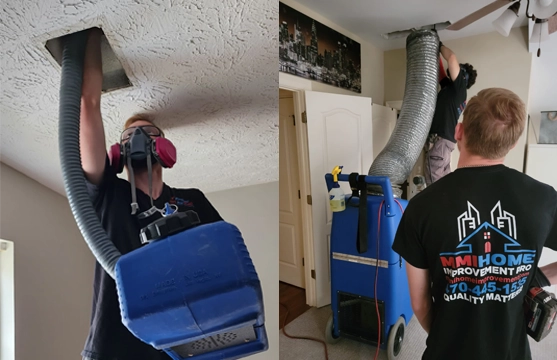The construction industry remains one of Australia’s most hazardous sectors, with workplace incidents occurring at rates significantly higher than the national average. Behind every construction site accident lies a complex web of contributing factors, but one preventative measure consistently proves its worth: comprehensive operator training. Far from being merely a compliance checkbox, proper training represents a critical investment in both human safety and business sustainability.
The True Cost of Construction Site Incidents
When discussing construction site safety, the human cost always takes precedence. Tragically, the construction industry accounts for approximately 12% of workplace fatalities in Australia despite employing only about 9% of the workforce. Beyond these devastating statistics are countless non-fatal injuries that permanently alter lives and careers.
However, the financial implications of workplace incidents extend far beyond initial medical costs:
- Workers’ compensation claims and increased insurance premiums
- Project delays and productivity losses
- Equipment damage and replacement costs
- Regulatory fines and potential legal proceedings
- Reputational damage affecting future contract opportunities
Industry research suggests that for every dollar spent directly on workplace injuries, companies typically spend an additional $3-5 on these indirect costs. For construction businesses operating on tight margins, these expenses can mean the difference between profitability and closure.
How Proper Training Mitigates Multiple Risk Factors
Quality operator training addresses numerous risk vectors simultaneously. When operators receive comprehensive instruction from qualified training providers, construction sites benefit in several measurable ways:
Enhanced Hazard Recognition
Trained operators develop “safety vision” – the ability to identify potential hazards before they manifest as incidents. This proactive approach to risk management prevents accidents rather than merely responding to them. Operators learn to constantly assess environmental conditions, equipment status, and workflow patterns that could create dangerous situations.
Research from Safe Work Australia indicates that inadequate hazard identification contributes to approximately 35% of construction site incidents. Proper training drastically reduces this figure by equipping operators with systematic risk assessment methodologies.
Optimal Equipment Operation
Modern construction equipment represents a significant technological advancement over previous generations of machinery. While these innovations enhance capabilities, they also introduce complexities that require specialized knowledge.
Properly trained operators understand:
- Correct equipment operation procedures and limitations
- Appropriate application of machinery for specific tasks
- Critical maintenance requirements and pre-operation inspections
- Warning signs of potential mechanical failures
Diggerman Training and similar quality providers ensure operators master both theoretical knowledge and practical application through hands-on experience with the actual equipment they’ll use on job sites.
Improved Emergency Response
Even with exemplary preventative measures, emergency situations can occur. Trained operators respond to these scenarios with practiced protocols rather than panic-driven reactions, often preventing minor incidents from escalating into major disasters.
Comprehensive training includes emergency shutdown procedures, evacuation protocols, and basic first response actions that can save lives in the critical minutes before emergency services arrive.
The Regulatory Landscape: Compliance as a Minimum Standard
Australian construction sites operate under stringent regulatory frameworks, including:
- Work Health and Safety Act 2011
- Model Work Health and Safety Regulations
- State-specific construction codes and regulations
- Australian Standards relevant to specific equipment
These regulations establish minimum training requirements for various operator roles. However, leading construction companies recognize that baseline compliance represents the floor, not the ceiling, of safety culture. The most successful organizations view training as an investment in operational excellence rather than a regulatory burden.
The ROI of Comprehensive Operator Training
Forward-thinking construction businesses recognize operator training as delivering a significant return on investment across multiple metrics:
Insurance Premium Reductions
Insurance providers increasingly offer premium discounts to companies demonstrating robust safety training programs. These discounts acknowledge the statistical correlation between comprehensive training and reduced claim frequency and severity.
A construction company with 50 employees might save $30,000-$50,000 annually on insurance premiums by implementing and documenting thorough operator training programs – a return that often exceeds the training investment itself.
Reduced Downtime and Increased Productivity
Trained operators work more efficiently while maintaining safety standards. They experience fewer equipment-related delays, understand optimal workflow procedures, and require less supervision.
Industry studies consistently show a 15-20% productivity increase among comprehensively trained operators compared to those with minimal training. This efficiency directly impacts project timelines and profitability.
Equipment Longevity and Reduced Maintenance Costs
Proper operation significantly extends equipment lifespan. Trained operators understand appropriate equipment applications, avoiding the excessive wear and damage that results from improper use.
The financial impact is substantial: construction equipment often represents investments of hundreds of thousands of dollars per unit. Extending equipment life by even 10-15% through proper operation delivers significant cost savings over time.
Building a Culture Where Training Is Non-Negotiable
Creating an environment where operator training is considered essential rather than optional requires leadership commitment and systemic approaches:
- Lead by example: Management must visibly prioritize and participate in safety training
- Recognize and reward: Acknowledge operators who maintain high training standards
- Integrate into operations: Make training discussions part of regular workflow planning
- Document and communicate: Share safety metrics and training outcomes with all stakeholders
- Continuous improvement: Regularly update training based on incident reviews and technological changes
Companies that successfully implement these practices don’t view safety training as separate from operations – they recognize it as fundamental to operational excellence.
The Path Forward: Beyond Minimum Requirements
As Australia’s construction industry continues addressing persistent safety challenges, operator training represents one of the most effective levers for meaningful improvement. Rather than viewing training as a cost centre or compliance requirement, progressive construction businesses recognize it as a strategic investment that delivers returns across multiple dimensions.
By partnering with quality training providers, implementing robust internal protocols, and fostering a culture where safety knowledge is valued, construction companies can significantly reduce their risk profiles while enhancing operational efficiency.
In an industry where margins are tight and risks are high, comprehensive operator training isn’t merely advisable – it’s absolutely non-negotiable for sustainable success.


































